Physical Address
304 North Cardinal St.
Dorchester Center, MA 02124
Bleeding into the subependymal germinal matrix zone with or without subsequent dissection into the lateral ventricle (intraventricular hemorrhage)
Germinal matrix zone (GMZ):
Fetal periventricular structure that forms between the developing deep cerebral nuclei and ependymal lining
Present between 13 and 36 weeks of gestation
Composed of immature neuroepithelial cells and thin-walled blood vessels with little supportive stroma
Prematurity is most important risk factor for germinal matrix hemorrhage (GMH)
Affects about 15% of newborns weighing less than 1500 g
Neonates with birth weight of 500 g to 750 g at highest risk
Incidence declining because of advances in neonatal care
Rare after 35 weeks gestational age
Acute chorioamnionitis is also a risk factor
The causes of GMH are multiple
Increased arterial blood pressure, venous congestion, hypoxia, trauma with rupture, and hemorrhage of thin-walled germinal matrix vessels
Local anatomic factors include high vascularity, immature fragile capillary bed with poor stromal support
Respiratory distress, abnormal eye movements, hypotonia, in utero fetal demise
CSF obstruction by intraventricular blood with posthemorrhagic hydrocephalus and “myelination delay”
Various neurologic sequelae: cerebral palsy, mental retardation, seizures, coma
Neurodevelopmental outcome correlates with the grade of GMH and the presence of associated abnormalities
High mortality with extensive intraventricular hemorrhage
About 75% mortality with grades II and IV intraventricular hemorrhage
Shunting required for post hemorrhagic hydrocephalus
Four grades of GMH by ultrasound, CT, or MRI:
Grade I: confined to the germinal matrix
Grade II: extension into the lateral ventricles without ventricular dilatation
Grade III: ventricular hemorrhage with ventricular dilatation/hydrocephalus
Grade IV: extension in parenchyma/white matter hemorrhage
Pinpoint to massive periventricular hemorrhages adjacent to the deep cerebral nuclei (especially the caudate nucleus)
Occur commonly at the level of the foramen of Monro
Larger hemorrhages extend into the lateral ventricles
Hydrocephalus when CSF low is obstructed by blood or related gliosis/scarring
Acute GMH:
Extravasated red cells within GMZ
Dissection of blood through stroma-poor GMZ followed by intraventricular hemorrhage
Periventricular hemorrhagic infarction
Chronic sequelae of GMH:
Cavitation of hemorrhagic necrosis with formation of gliotic cyst(s)
Hemosiderin-laden macrophages; scarring of ependyma and leptomeninges
May have associated hyaline membrane disease and respiratory distress syndrome
Hemorrhagic periventricular leukomalacia
Coagulopathy
Trauma

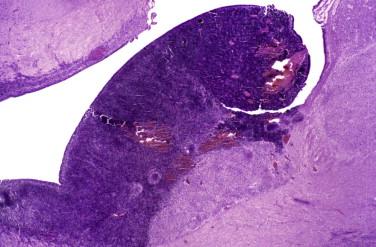
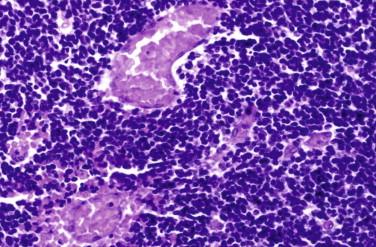
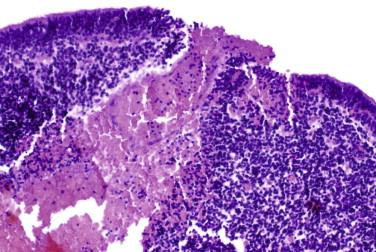
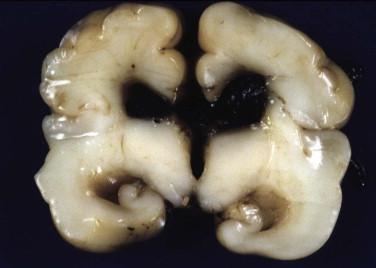
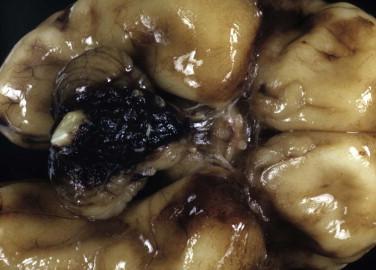
Selective ischemic injury of periventricular white matter during the fetal/perinatal period and the most common ischemic brain injury in premature infants; periventricular leukomalacia (PVL) encompasses focal necrotic lesions as well as diffuse white matter gliosis (also known as perinatal telencephalic leukoencephalopathy ).
Become a Clinical Tree membership for Full access and enjoy Unlimited articles
If you are a member. Log in here